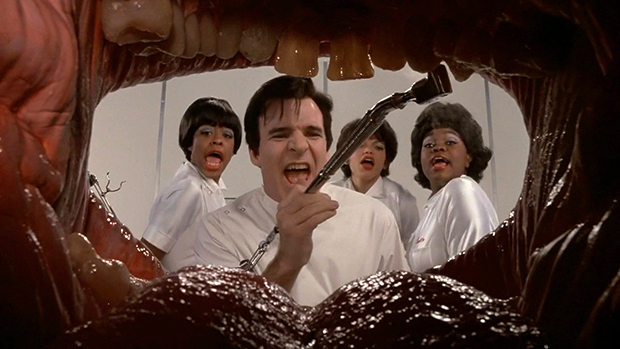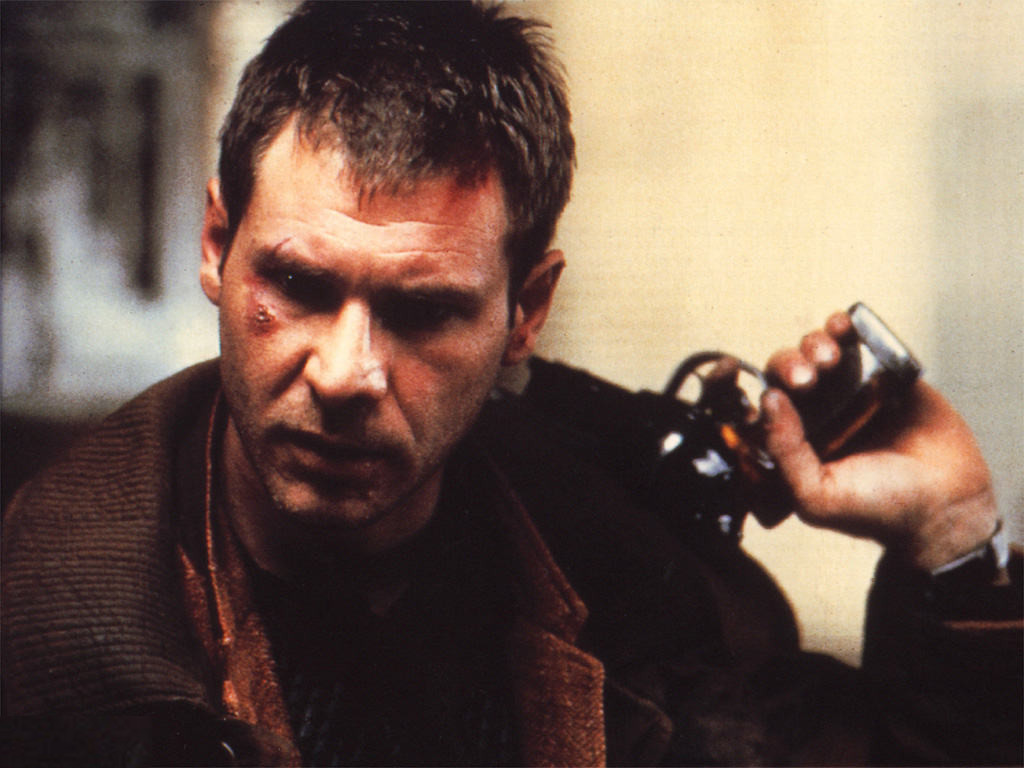
Alternate endings can often be a fascinating insight into the creative process behind films that we know and love. Sometimes alternate endings never make it past the storyboard stage, and other times multiple endings are filmed and tested before the final ending is chosen.
Alternate endings can also reveal a filmmaker’s thoughts and feelings about characters, or reveal unknown insights into well-known stories. Sometimes alternate endings are vetoed by the studio or producer, and can become known as the ‘true’ endings. Other times, alternate endings are the ones that have been discarded in favour of a different ending usually based on audience perceptions and reactions.
This list looks at films where the alternate endings brought something more exciting, interesting or shocking to the film over their original or theatrical endings. Needless to say, there will be major spoilers.
1. The Butterfly Effect (2004)

The Butterfly Effect, starring Ashton Kutcher and Amy Smart, is about college student Evan Treborn who has the ability to time travel back into his younger self and change events, thus affecting the present. However, changing the events of the past often has unintended and catastrophic consequences for Evan and his friends including love interest Kayleigh.
The ending: After travelling back in time several times and not receiving the outcomes he desires, Evan realises that he is only hurting himself and his friends. He decides to travel back in time one final time – to the day he met Kayleigh as a child.
Rather than being friendly towards her, he upsets her so that she will decide to live with her mother instead of her father when her parents get divorced. This decision means that Kayleigh moves away to a different neighbourhood and does not suffer from the destructive childhood that she had before. She also grows up away from Evan. Years later, Evan passes Kayleigh on the street where they both walk past each other.
The alternate ending: There are actually three alternate endings, but two of them are the same as the theatrical cut version with slightly differing versions of how Evan and Kayleigh react when they see each other on the street. The third alternate ending is the director’s cut. In this cut, again Evan travels back one final time. This time, he travels back to the womb just before he is born. He strangles himself with the umbilical cord, thus preventing the multi-generational curse of time travelling from continuing.
Why it’s better: The director’s cut may be the most out there ending, but it fits in well with the dark tone of the film and packs an emotional punch that leaves you feeling uneasy. It also helps better explain earlier plot points about Evan’s mother suffering from previous stillbirths, the implication being that all her children have been born with the time travelling ability and have chosen to go back in time to try and stop the curse.
2. 28 Days Later (2002)

When bicycle courier Jim (played by Cillian Murphy) wakes up from a coma, he finds London all but deserted. A deadly virus has been released turning victims into zombie like creatures. Jim finds a group of survivors who together must undertake a perilous journey to safety.
The ending: Selena and Hannah try to save Jim after he sustains a potentially fatal wound from a gunshot. Jim slips into a coma, but later reawakens in a remote cottage in Cumbria where Selena and Hannah have set up home. Jim finds Selena sewing fabric together to make letters to spell out a message. Together the three of them go outside and reveal the final letter of the sign which spells out ‘HELLO.’ A fighter jet flies over the message and calls for a rescue helicopter. Elsewhere the infected are shown to be dying of starvation.
The alternate ending: A few alternate endings were filmed which all show Jim dying. But director Danny Boyle and writer Alex Garland call this alternate ending the “true ending.” In this ending, Jim is rushed to the hospital by Selena and Hannah who attempt to perform the procedures to save him. However, they are unsuccessful and Jim dies. Fully armed, Selena and Hannah leave the hospital through the operating doors which gradually stop swinging.
Why it’s better: The good guy dies at the end would have been a great twist to the film, and Jim dying in the hospital bed would have bought the film full circle from him waking up in one at the start. The final shot of Selena and Hannah leaving through the swinging doors would also have been much more iconic, and probably would have given way to similar shots in homage to the film.
3. Scott Pilgrim vs. the World (2010)

Based on the graphic novels, Scott Pilgrim vs. the World follows Scott Pilgrim as he is set upon a quest to defeat the seven evil exes of his new girlfriend in order to win her heart.
The ending: After Gideon defeats Scott, Scott uses his 1-up to give himself an extra life. He challenges Gideon again, and gains the “power of self-respect” sword. He uses it to disarm Gideon and then he joins forces with Knives to defeat Gideon once and for all. Afterwards Knives encourages Scott to pursue Ramona. At Knives encouragement, Scott reunites with Ramona.
The alternate ending: In the alternate ending things are pretty much the same although after Scott and Knives defeat Gideon, a character box pops up saying “Knives Chau, Age 18.”. After exiting the club, instead of going with Ramona, a silent understanding passes between Scott and Ramona where each realises that Scott is better suited to being with Knives. Ramona walks away, and Scott and Knives share a kiss. The film ends with them at the arcade playing the Ninja DDR game.
Why it’s better: Scott’s relationship with Ramona never really made much sense, it’s plays on their insecurities, they don’t really have much in common and it’s ultimately toxic. Scott has much more in common with Knives, and part of his character’s story arc was to learn how to rearrange his priorities. Ending up with Ramona shows that he hasn’t really learnt anything. Plus, the ending where the film finishes with them playing the arcade is much more fun and heart-warming fitting in with the overall playful tone of the film.
4. Little Shop of Horrors (1986)

Based on the musical of the same name, Little Shop of Horrors sees Flower shop employee Seymour comes across a strange plant. Things get stranger still when the plant begins to speak, and demands blood in order for it to carry on growing.
The ending: Audrey II is revealed to be an alien from outer space and traps Seymour, destroying the shop. Audrey II tries to bury Seymour beneath the rubble of the shop. Seymour manages to grab an exposed electrical cable and electrocutes Audrey II. Seymour is able to reunite with Audrey and they marry and move to the suburbs together.
The alternate ending: The alternate ending is actually the same as the musical’s ending. In this ending, Audrey is attacked by Audrey II but does not survive. Before she dies she tells Seymour that he should feed her to the plant so that he can become famous. Seymour tries to destroy Audrey II and kill it but Audrey II eats him alive. Afterwards Audrey II is able to spread her buds across the country and eventually the world, destroying major cities and eating people.
Why it’s better: The alternate ending is shocking, disturbing and is true to the original story. Audrey II destroying the world’s major cities would have looked brilliant on screen and made Little Shop of Horrors into even more of a horror and a highly original one at that – how many horror films show plants from outer space winning against humanity?!
5. Blade Runner (1982)

Blade runner Rick Deckard must track down and destroy a group of replicants who have stolen a spaceship and returned to Earth to try and find their creator. During his search he uncovers disturbing secrets about the replicants manufacturer, The Tyrell Corporation.
The ending: After defeating the rogue replicant, Deckard’s narration about how Rachael is special and will live for an indeterminate amount of time finishes the story as he and girlfriend Rachael drive off happily into the sunset.
The alternate ending: Chances are, if you have seen Blade Runner in the last few years then this is the ending you will be familiar with. In this ending, Deckard and Rachael hurriedly leave the apartment, get into the elevator and the elevator doors close. This leaves the film on ambiguous ending rather than the happy ending of the theatrical version.
Why it’s better: The ambiguous ending is much truer to the overall tone and story of the film. This ending also allows the for the debate of whether Deckard is a replicant or not. Not knowing what happens to Deckard and Rachael is a much more fitting ending for such a cult science fiction film.